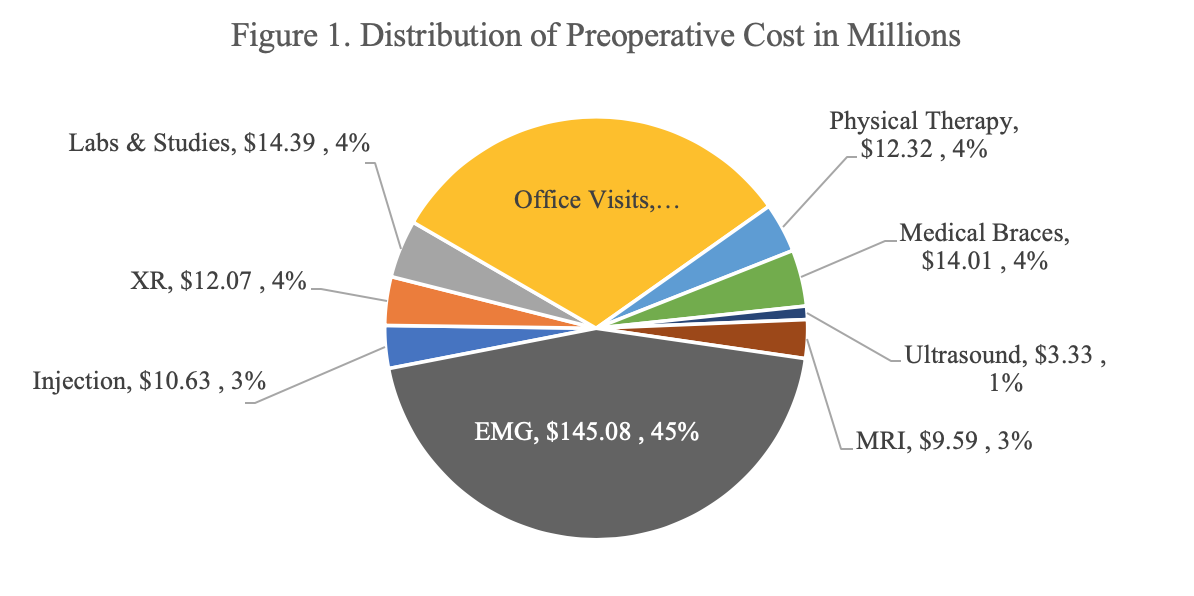The Workup and Conservative Treatment of Carpal Tunnel Syndrome: How Much Does it Cost?
Corey C Spencer, BS1, Paul T Greenfield, BS1, Alexander M Dawes, BS1, John T Hurt, BS1, Roy J Toston, BS1, Eric Wagner, MD1, Michael Gottschalk, MD2 and Charles Andrew Daly, MD1, (1)Emory University, Atlanta, GA, (2)Orthopedic Surgery, Emory School of Medicine, Atlanta, GA
Title: The Workup and Conservative Treatment of Carpal Tunnel Syndrome: How Much Does it Cost?
Authors: Corey Spencer, Alex Dawes, Paul Greenfield, Eric Wagner, Michael Gottschalk, Charles Daly.
Introduction: The purpose of this study is to evaluate the cost of the workup for patients undergoing carpal tunnel release. As no standardized protocol exists, we hypothesize that there will be a large amount of variability in diagnostic studies used.
Methods: We queried the Truven Marketscan database to identify patients undergoing Carpal Tunnel Release from the 2010 to 2017. Patients were identified by common CPT codes and only included if they were enrolled for a minimum of 12 months prior to surgery. All associated CPT codes for each patient during the one year preoperative period were collected and filtered to only include those codes related to median neuropathy. The codes were then categorized as office visits, diagnostic imaging (XR, ultrasound, and MRI), EMG, injections, PT, durable medical equipment, and preoperative labs. The frequency and associated cost for each category was determined.
Results: There were 378,381 patients included in the study. 64.9% were female and 35.1% were male with an average age of 56.21 years old. A per-patient average cost (PPAC) of $858.74 was spent on preoperative workup and conservative treatment. The highest contributing services to the overall preoperative financial burden were EMG 44.6% and Office Visits 31.9%. (Figure 1.) The most common diagnostic study being utilized was EMG (65.2%), x-ray (36.9%), and ultrasound (5.0%). Regarding conservative treatment, 16.1% of patients underwent an injection during the one-year pre-operative period, 26.8% received a medical brace, and only 6.6% utilized PT. When analyzing by age group, the PPAC for patients 70 years old or older was significantly less than those younger than 70 ($723.92 vs. $878.76).
Conclusion: Although the use of PT, bracing, and injections are widely accepted nonoperative treatment options, they appear to be vastly underutilized. Further studies need to be done to examine the necessity of EMG as it is the largest overall cost contributor.

Back to 2021 ePosters
